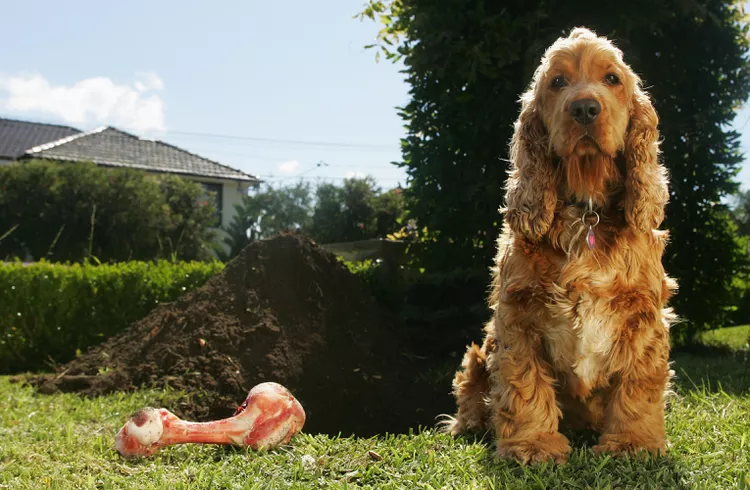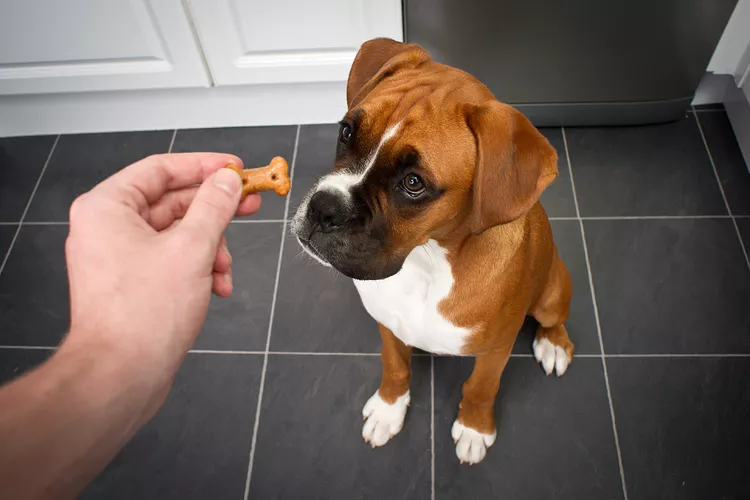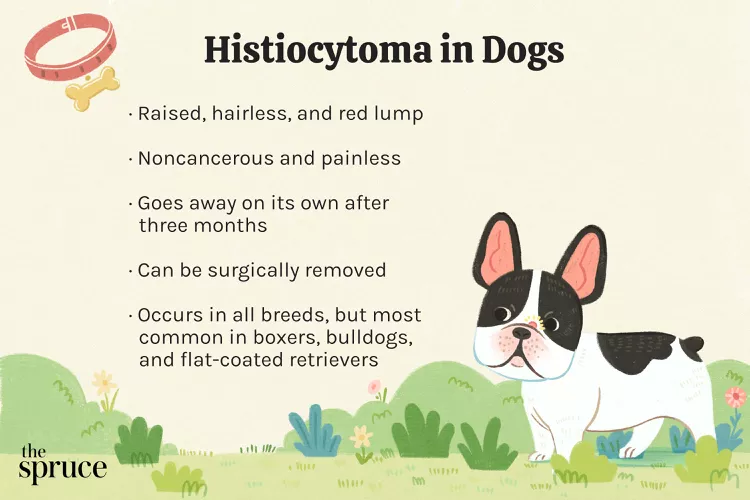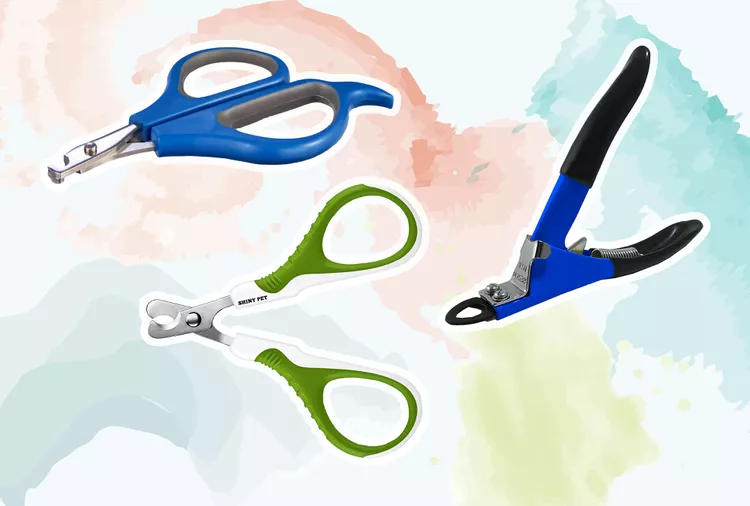
Many pet stores stock raw or dehydrated treats for dogs, including chicken feet. Some companies tout the health benefits of chicken feet, including dental and joint health benefits. But can dogs eat chicken feet safely? What should you know before giving your dog one to munch on?
Proponents of chicken feet for dogs say that because chicken feet are full of glucosamine and chondroitin, they can be a great, nutritious snack for older and aging dogs. In fact, supplementing an elderly dog with glucosamine and chondroitin can help soothe achy joints. Proponents of feeding dogs raw chicken feet also state that, because chicken feet are
mostly bones and ligaments, they also make great dental treats as the crunchy bones and connective tissues can help break up any tartar on the teeth. However, the fact remains that it's still raw chicken. The biggest risk of feeding your dog a raw diet or raw treats is the risk of parasites and bacteria. Studies show that between 20-48% of raw meat based diets tested were contaminated with Salmonella and 18 of the Salmonella strains found were resistant to 12 of the 16 antibiotics there were tested against. In another, small study, 80% of tested homemade raw chicken diets tested positive for Salmonella and 30% of the stools tested were also positive.
Raw chicken, however, doesn't just carry a risk of Salmonellosis. It can be contaminated with other types of bacteria as well. Chicken sold in stores and meant for human consumption has been shown to test positive for Campylobacter at a rate of 29% to 74% and Listeria at a rate of 15% to 34%. With that in mind, chicken feet from the butcher shop may not be the safest option.
If there are risks of bacterial infection with feeding raw chicken feet does cooking the chicken feet make them safer? Unfortunately, cooking chicken feet probably only makes them more dangerous for your dog. This is because of all the bones within the feet that contribute to the claims of joint and teeth benefits. When chicken bones are cooked they become incredibly brittle and can splinter easily. Splintered bits of chicken bone can be as sharp as a scalpel blade and can easily perforate a dog's gastrointestinal tract. This can lead to life threatening peritonitis and sepsis. The process of dehydrating meats into jerky type treats does involve keeping the meat at a temperature between 130 degrees Fahrenheit and 140 degrees Fahrenheit throughout the process to prevent bacterial contamination. Subjecting chicken feet to these temperatures for the time it takes to dehydrate them may be enough to turn the bones brittle, so dehydrated chicken feet treats, whether store-bought or homemade, may not be safe.
Chicken feet aren't the only raw treats at boutique pet shops. Some stores even have a raw bar, where you can help yourself to bulk bins of raw chicken hearts, duck hearts, bully sticks, chicken and duck necks, etc. Most of these are freeze dried, but you might want to contact the manufacturer to check if the label at the store doesn't make it obvious.
Dehydrating meats has been long used to make jerky for people and in recent years more people have been dehydrating meats to make jerky for their pets. The process of dehydrating removes all water from the meat, which prevents bacteria from proliferating, but dehydrating by itself doesn't always kill any bacteria already present in the meat.
The current USDA recommendation for jerky is to first freeze the raw meat for up to three days, thaw in the refrigerator, and then heat it to 160 degrees Fahrenheit, either by steaming or roasting. Once the thickest part of the meat has reached this internal temperature, the dehydrating process can begin. It is not recommended to dehydrate meat into jerky in open air but rather using an artificial heat source. The USDA advises keeping the meat at a steady and constant
temperature between 130 degrees Fahrenheit and 140 degrees Fahrenheit throughout the dehydrating process as this prevents any parasites or bacteria from growing on the meat during the actual dehydration process.
While chicken feet may being high in glucosamine and chondroitin may make them seem like healthy, natural treats for your dog, the risks of feeding them outweigh any benefit. Additionally, there are safe glucosamine/chondroitin supplements derived from just as natural ingredients. There are also a variety of dental treats and chews on the market that don't come with risks of intestinal parasites or gastrointestinal perforations. If you have questions about joint supplements or dental health in your dog, or about raw or freeze-dried treats for your dog, speak to your veterinarian.

Cute Pictures & Facts About Calico Cats & Kittens
Learn fascinating facts about calico cats, including photos, the genetics behind this color combination, and common folklore and traditions.
How to Prevent Cat Separation Anxiety During Vacations
Discover why cats develop litter box problems and cat behavior problems when you go on vacation and what you can do about it to help them.
Cat Behavior Changes That Might Mean Something's Wrong
Cats' behavioral changes may indicate problems—or they may mean nothing at all. Explore causes of odd behavior and what to do about them.
Lhasa Apso: Dog Breed Characteristics & Care
The Lhasa apso is an ancient breed from Tibet that was bred to be a watchdog. Learn about its history, health, exercise needs, and more.
Reasons Why Dogs Run Away and How to Stop It
Dogs can escape, especially if they’re bored and not properly contained. Here are some techniques for stopping your dog from running away.
Can Dogs Get Depression? How to Help Your Sad Dog
Can dogs get depression? Learn about the signs of depression in dogs and find out how to help your sad dog.
How to Stop Aggression in Dogs
Dog aggression can be a serious behavior issue for pet owners. Learn how to stop aggression in dogs before someone gets hurt.
How to Stop Your Dog From Growling
A growling dog can soon become even more aggressive. Reduce the noise and potential for a dangerous situation with some of these techniques.
Why Do Dogs Dig Holes? How to Stop Your Dog from Relandscaping Your Yard
Dogs have been digging holes for centuries and for many reasons. Whether they’re bored or want to cool off in the dirt, here are the top reasons why dogs dig holes.
Dog Treat Varieties
Learn about the different types of dog treats on the market and decide which are best for your dog.
Can Dogs Eat Asparagus?
Dogs can eat asparagus, provided the vegetable is cooked plain and cut up for them. Seasonings, salt, and butter make it unhealthy for dogs.
Histiocytomas in Dogs
A histiocytoma is a type of benign (non-cancerous) skin lump that usually affects young dogs. Learn the causes, treatment, and prevention.
Why Is My Dog’s Eye Swollen?
If your dog's eye is swollen, she may need veterinary attention. The inflammation could be caused by allergies, an injury, or even a tumor.
Common Bugs and Parasites Found on and Inside Dogs
Learn about common types of parasites in dogs. Find out how to treat and prevent parasites to keep your dog, your family, and yourself safe.
Exploring the Different Types of Pet-Friendly Beaches
Are you looking for pet-friendly beaches? Learn about the different types of pet-friendly beaches, their locations, and tips for visiting them with your pet.
10 Obscure, Little-known Canine Facts in Honor of National Dog Day
With National Dog Day upon us, it's time to celebrate everything about our favorite pets—even the weirder stuff. Here are 10 obscure facts about dogs you probably didn't know.
Kitten Development From 3 to 6 Months Old
Kittens grow and change a lot during their first year. Find out what happens between the ages of three months and six months old.
95 Siamese Cat Names
Our list of Siamese cat names has diverse and fun options to help you choose the ideal moniker for your elegant and lovable feline companion.
What to Buy for Your New Cat: A List of Essentials
Before you bring your new cat or kitten home, there are a number of things to collect or buy so your cat will feel welcomed like a family member.
The 6 Best Cat Nail Clippers of 2024 for a Safe Trim
Clipping your cat's nails can save your furniture and keep your kitty comfortable. We asked veterinarians for their cat nail clipper recommendations.